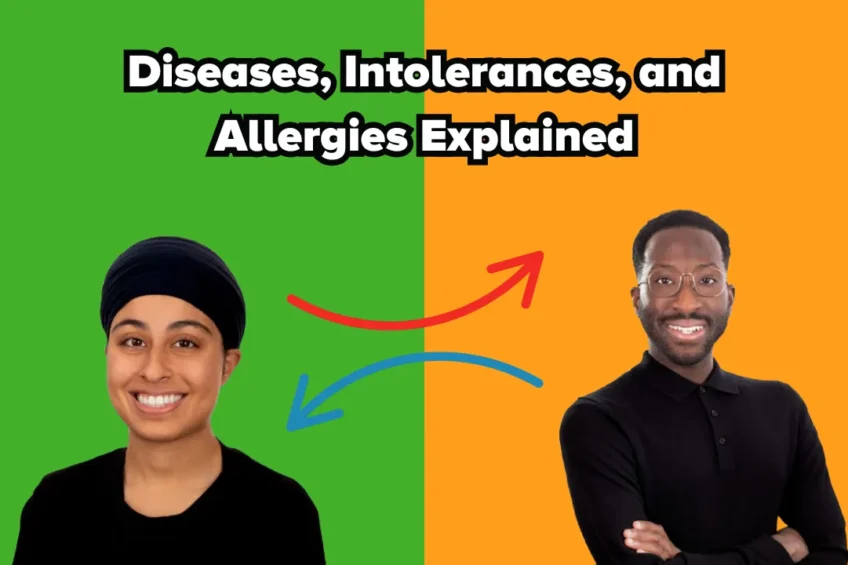Understanding the Difference Between Disease, Intolerance, and Allergy
Food issues can be confusing, especially when it comes to understanding the difference between disease, intolerance, and allergy. Knowing how these conditions differ can help you or your loved ones find the right support, make safer food choices, and feel more empowered in managing your health.
What is a Food Allergy?
A food allergy is an immune system response to a specific protein in a food. When someone with an allergy eats even a small amount of the food they are allergic to, their immune system reacts quickly. This can cause symptoms like itching, swelling, hives, stomach pain, vomiting, or, in severe cases, anaphylaxis. Anaphylaxis is a life-threatening reaction that needs immediate medical care. Food allergies are serious and require complete avoidance of the trigger food, along with carrying emergency medication like an epinephrine auto-injector.
What is a Food Intolerance?
Food intolerance does not involve the immune system. Instead, it happens when the body has trouble digesting a certain food or ingredient. This can cause uncomfortable symptoms like bloating, gas, stomach cramps, or diarrhea, usually hours after eating the food. Lactose intolerance, for example, happens when the body does not produce enough of the enzyme lactase, which helps digest lactose in dairy. While intolerances can affect quality of life, they are not life-threatening. Some people with intolerances can enjoy small amounts of the food without problems, or use products like lactase pills to help digest it.
What is Celiac Disease?
Celiac disease is an autoimmune condition, not a food allergy or intolerance. When someone with celiac disease eats gluten, a protein found in wheat, barley, and rye, their immune system attacks the lining of their small intestine. Over time, this damage can cause nutrient deficiencies, digestive problems, fatigue, skin rashes, and other health issues. Untreated celiac disease increases the risk of other autoimmune conditions, osteoporosis, and certain cancers. Unlike an intolerance, people with celiac disease must completely avoid gluten for life to prevent damage and heal the gut.
Why the Differences Matter
Understanding these differences is important because each condition requires a different approach. A food allergy needs strict avoidance and emergency planning. A food intolerance may be managed by reducing the amount eaten or using digestive aids. Celiac disease demands a lifelong gluten-free diet and monitoring for nutritional deficiencies or complications. Misunderstanding these conditions can lead to unnecessary restrictions or, worse, serious health risks.
How to Get a Proper Diagnosis
If you suspect you or your child might have an issue with a food, talk with a healthcare provider. A doctor or dietitian can help determine what tests or elimination diets are needed for an accurate diagnosis. Do not start removing major foods from your diet without guidance, as this can make it harder to get a clear answer and lead to nutrient deficiencies.
Empowering Yourself with Knowledge
Food-related health issues can feel overwhelming, but understanding what you are dealing with is the first step to feeling better and staying safe. By learning the differences between allergies, intolerances, and diseases like celiac, you can make confident choices, advocate for yourself or your family, and enjoy food without fear.


